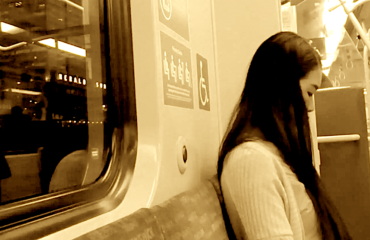A Fogarty family legend tells of a young Irishman’s decision to flee the wretchedness in which he found himself and rewrite the course of his own life.
It is said that there was a farmer, on his hands and knees, scavenging through the Irish mud. Clothes looked to fall off his bones. His chest rattled with every movement. And his eyes, sunken into his face, revealed only despair. As the young man passed by, the fading farmer spotted what had been eluding him. There, wedged in the beak of a beady-eyed crow, was a potato. Food.
As if it were his final act, the farmer lunged, and the crow flew away. The sense of desperation was, for the young man watching on, overwhelming. He could not go the way of the farmer. The choice was made: to gather his effects, bid his farewells, and embark on the 80-day voyage to the land of promise; Australia. And perhaps it was the memory of the dying farmer that drove the young man on to thrive.

Thomas Bernard Fogarty, born 1833 in Ireland, would seem to have enjoyed his first decade of life without worry. He, along with his four brothers, was raised on 14 acres of farmland at Fishmoyne. At a time when Irish farmers were forced into tenancy by British rule, such a property was quite a reasonable holding. Family accounts value the land at 15 pounds and 15 shillings, and it can be assumed that the family was, for the most part, comfortable.
Then the Great Famine smothered Ireland throughout Fogarty’s adolescent years. By the 1850s, the country’s social, political and economic structures were reeling. Hunger was constant, disease was rife, and early death was deemed to be a foregone conclusion. Many, like the Fogarty brothers, saw no future in an Irish existence. All five emigrated to Australia as soon as it became financially possible, with Thomas landing in Victoria in 1857.
Ten thousand miles from his native county of Tipperary, Fogarty immediately established himself within the municipality of Hotham, the suburb known today as North Melbourne.
Commentary from the North Melbourne Courier describes his strong association with the area from the day he trod the soil of his adopted land.
It was a modest grocery store on Errol street that afforded Fogarty his first Australian income and political ambitions were made apparent by his first role as a council auditor in 1861. His opportunistic and industrious traits continued to place him in good stead. And, with a foothold in the community, the presence of Thomas Fogarty expanded rapidly throughout Hotham.
Successful trading as a grocer prompted expansion into the wine and spirit industry, with Fogarty, Doyle and Co becoming a leading wholesaler in Melbourne. It also financed a significant property portfolio, with Fogarty buying several houses along Chetwynd Street. A two-story townhouse at No. 15 provided a home for the growing Fogarty family, as two marriages saw Thomas father 13 children.
As private life thrived, so too did a public profile prosper. Elected to council first in 1868, Fogarty would hold the privileged position consistently until his death in 1900. His tenure in civic office is further enriched by four terms as mayor in 1873, ’82, ‘90 and ’95. To these positions of influence, Fogarty brought to bear the gifts of ripe experience, a legal-like knowledge of the Local Government Act, and that financial acumen he showed in the transaction of his own private business.
The memory of his character, as shared by to North Melbourne Historian Heather McKay, is one of strength, fairness and respect.
Fogarty was quick in debate and prompt to detect weakness in an opponent’s armour. He could be sarcastic and severe but never condescending. Such a description may be exhibited no more clearly than through his relationship with fellow councillor John Laurens. As leaders of Irish and English factions respectively, the pair were said to have been constantly at loggerheads. Yet despite many heated arguments, respect for Laurens was irrefutable, with Fogarty convening a service to honour the Englishman in his retirement.

His greatest public achievements were undoubtedly driven by his appreciation for education and the continual advancement of society. In spite of the Hotham’s lean finances, Fogarty commissioned a free library and reading rooms, while offering a significant monetary contribution of his own. As a part of this building, he initiated a Mechanics Institute, wherein local workers could attend evening lessons to learn practical skills. At a ceremony in 1883, the foundation stone for the project was laid by the mayoress and the library was declared open. The North Melbourne Library still stands today at that address on Errol Street.
Fogarty’s death in November 1900 was sudden and felt by many. He not only left behind a wife and children, but a township of citizens who had grown to respect, trust and rely on him to represent them. An article in The Herald the day after his death encapsulates this, writing that the town had lost one who had been its father, its friend and almost its founder.
Such a legacy of resourcefulness, diligence and achievement must, however, be traced back to a time of despair, in a place of scarcity. If it weren’t for Fogarty’s decision to leap into uncertainty and cling to hope, perhaps his memory would resemble something far less salient.
Instead of the dignified requiem of hundreds, perhaps an ending like the Irish farmer in the mud.
For more stories from The Citizen’s Graveyard Shift series, click here.




